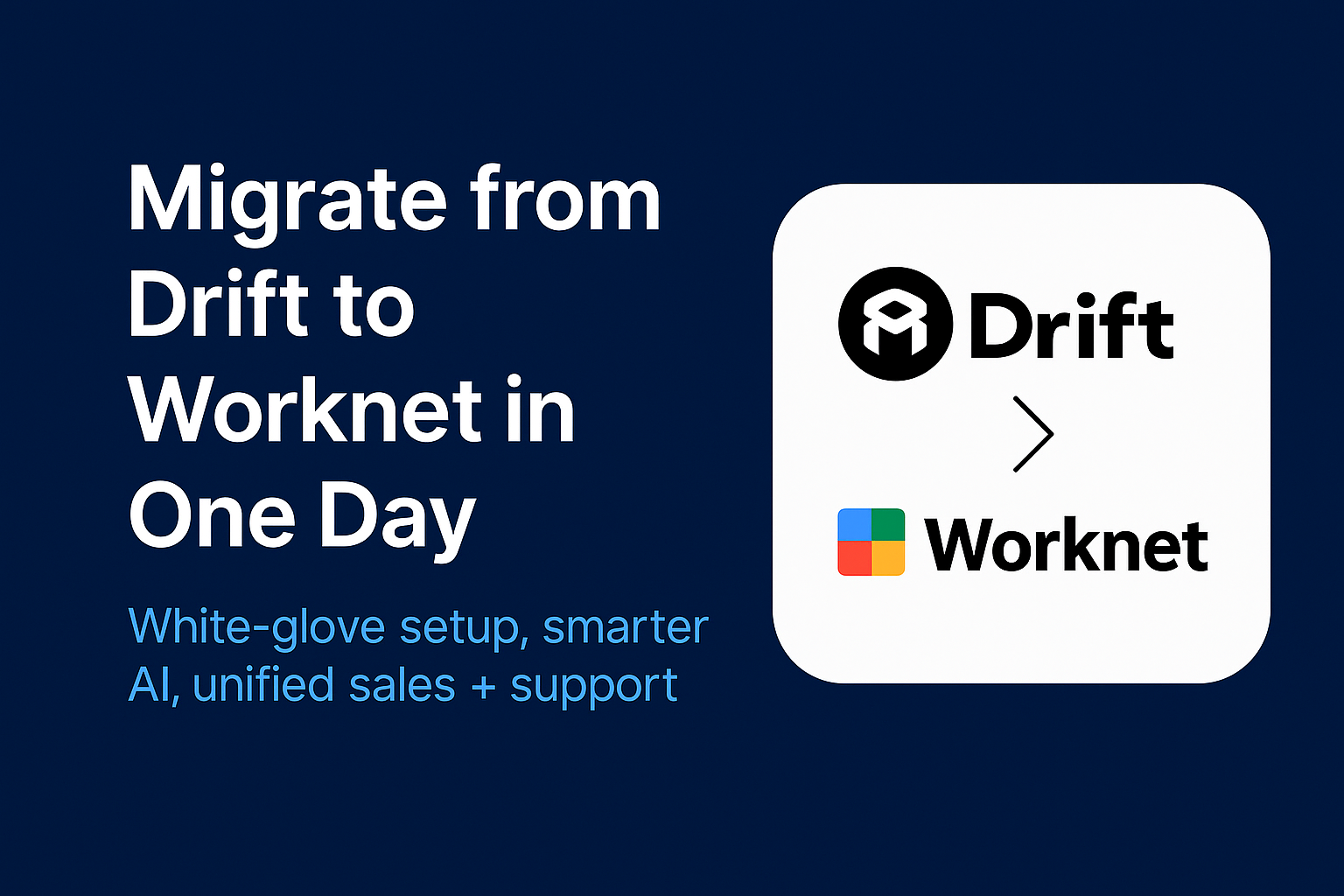8 Powerful NPS Survey Examples to Copy in 2025
The Net Promoter Score (NPS) is more than a metric; it's a compass for your business, pointing directly toward opportunities for growth and improvement. But a compass is only useful if you know how to read it. The true power of NPS lies not in asking the standard question, "How likely are you to recommend us?" but in asking the right question at the right time. This is where most companies falter, using generic templates that yield vague, un-actionable feedback.
This article moves beyond theory to provide a tactical playbook. We will dissect a wide range of NPS survey examples, from post-purchase and onboarding to specific feature feedback. You won't just see the questions; you will learn the strategic reasoning behind each one, discover how to analyze the responses, and get actionable takeaways you can implement immediately.
Each example is a blueprint for transforming raw customer sentiment into a precise, data-driven growth strategy. Ultimately, the insights gained from these surveys can be directly applied through proven strategies to improve client satisfaction and drive long-term business growth. Let's explore how to turn simple feedback into your most valuable asset.
1. Post-Purchase NPS Survey
The Post-Purchase NPS survey is a transactional survey sent to a customer shortly after they complete a purchase. Its primary goal is to measure satisfaction with the buying experience itself, capturing immediate feedback on aspects like the checkout process, payment options, site navigation, and initial order confirmation. This is one of the most powerful NPS survey examples because it isolates a critical, high-impact touchpoint in the customer journey.

By deploying this survey while the experience is fresh, companies can gather highly accurate, in-the-moment sentiment. Giants like Amazon and Apple use this method to quickly identify friction points in their sophisticated e-commerce funnels. Shopify merchants frequently leverage apps to automate this process, turning customer feedback into a direct pipeline for conversion rate optimization.
Strategic Analysis
The key strategic advantage of a post-purchase survey is its immediacy and specificity. Unlike a broad relationship survey, this feedback is not about the overall brand perception or product quality (which the customer may not have even received yet). It's a focused critique of the purchasing mechanism.
Key Insight: This survey transforms the transactional moment from a simple data point (a sale) into a rich source of qualitative insight. It helps you understand the "why" behind checkout abandonment rates and identify silent frustrations that cause cart friction.
Responses directly inform product management and UX design teams, providing a clear roadmap for optimizing the path to purchase.
Actionable Takeaways
To effectively implement a post-purchase NPS survey, follow these specific tactics:
- Timing is Crucial: Send the survey within 24 hours of the purchase confirmation but before the item is delivered. This isolates feedback to the buying process alone.
- Question 2: "What was the primary reason for the score you gave?"
- Question 3 (Optional): "Was there anything we could have done to make your purchasing experience better?"
2. Relationship NPS Survey
The Relationship NPS Survey is a periodic survey sent to assess overall customer loyalty and satisfaction with a brand as a whole, independent of any single transaction. It measures the long-term health of the customer relationship, making it one of the most foundational NPS survey examples for predicting churn and understanding brand equity. This survey gauges how a customer feels about your company over time, not just about their last interaction.
Subscription-based services like Netflix and SaaS giants like Salesforce rely heavily on relationship surveys. They are typically sent at regular intervals, such as quarterly or annually, to track sentiment trends. This provides a high-level benchmark of customer loyalty that can guide broad strategic initiatives, from product roadmaps to customer retention programs.
Strategic Analysis
The core strategic value of a relationship survey is its ability to provide a long-term, holistic view of customer sentiment. While transactional surveys pinpoint friction at specific touchpoints, relationship surveys answer the bigger question: "Are our customers becoming more or less loyal over time?" This macro-level insight is indispensable for C-suite executives and strategic planners.
Key Insight: This survey transforms customer feedback from a series of isolated events into a predictive trend line. It helps you forecast customer lifetime value (CLV), identify at-risk segments before they churn, and measure the ROI of brand-building and customer success efforts.
Responses from this survey directly influence high-level business strategy, informing everything from market positioning to resource allocation for customer support and success teams.
Actionable Takeaways
To effectively implement a relationship NPS survey, follow these specific tactics:
- Establish a Consistent Cadence: Send the survey at a regular, predictable interval (e.g., every 90 days, semi-annually, or annually). This consistency is critical for accurately tracking trends and comparing data period-over-period.
- Question 2: "What is the primary reason for the score you gave?"
- Question 3 (Optional): "Which of the following words would you use to describe our brand?" (Provide options like "Innovative," "Reliable," "Expensive," etc.)
3. Customer Support NPS Survey
The Customer Support NPS Survey is a transactional survey sent to a customer immediately after a support interaction concludes, such as a resolved ticket or a finished live chat. Its primary purpose is to gauge satisfaction with the quality of the support received, not the product or the brand as a whole. This is one of the most critical NPS survey examples for retaining customers, as it directly measures the effectiveness of your problem-resolution processes.

This survey provides a direct feedback loop on individual agent performance and overall support team efficiency. Companies like Zendesk and Intercom have built this functionality into their platforms, allowing businesses to automatically trigger surveys after a support ticket is closed. Microsoft famously uses this method after technical support calls to refine its global customer service operations and identify areas for agent coaching.
Strategic Analysis
The strategic power of this survey lies in its ability to isolate support quality as a key driver of loyalty. A customer may love a product but churn due to a single poor support experience. This survey captures that specific sentiment, preventing it from being diluted by general brand feelings. It provides a clear, measurable KPI for support team managers to track performance.
Key Insight: This survey helps differentiate between product-related dissatisfaction and service-related dissatisfaction. Understanding this distinction is crucial for resource allocation; it tells you whether to invest in product development or in support team training and process improvement.
The feedback is invaluable for creating data-driven coaching programs for support agents and for optimizing support channel strategies.
Actionable Takeaways
To effectively leverage a customer support NPS survey, implement these specific tactics:
- Deploy Immediately: Send the survey within one hour of the support interaction's conclusion to ensure the customer's memory is fresh and the feedback is accurate.
- Question 2: "What was the main reason for the score you gave?"
- Question 3 (Optional): "How satisfied were you with the time it took to resolve your issue?"
4. Onboarding NPS Survey
The Onboarding NPS Survey is a specialized, transactional survey sent to new customers after they complete the initial setup and adoption process. Its primary goal is to measure satisfaction with the first-use experience, providing crucial feedback on getting started, understanding core features, and achieving initial value. This is one of the most critical NPS survey examples for SaaS and software companies, as it directly targets the period with the highest risk of customer churn.

By measuring sentiment at this "make-or-break" moment, companies can optimize their new customer experience to drive long-term retention. Industry leaders like Slack, Dropbox, and Zoom use this survey to pinpoint friction in their onboarding flows. For example, Dropbox might survey users after they upload their first few files, tying the feedback directly to the moment of initial product value realization.
Strategic Analysis
The strategic power of the onboarding survey lies in its ability to diagnose and prevent early churn. Feedback gathered here isn't about long-term satisfaction; it’s a direct assessment of your product's ability to deliver on its initial promise and guide new users to their "aha!" moment.
Key Insight: This survey helps you distinguish between product flaws and onboarding flaws. A low score might not mean your product is bad, but that your instructions, tutorials, or in-app guidance are failing to demonstrate its value effectively.
Responses provide a clear, data-driven mandate for product, marketing, and customer success teams to refine tutorials, simplify UI, and improve educational content, directly impacting user activation rates.
Actionable Takeaways
To maximize the value of an onboarding NPS survey, implement these focused tactics:
- Trigger After Key Actions: Don't just send the survey after a set number of days. Trigger it after a user completes a critical value-driving action, such as creating their first project, inviting a team member, or running their first report.
- Question 2: "What was the single biggest challenge you faced while getting started?"
- Question 3 (Optional): "Which onboarding resource (e.g., tutorial video, help doc, in-app guide) did you find most helpful?"
5. Event-Based NPS Survey
The Event-Based NPS survey is a highly targeted survey triggered by a specific customer action or milestone. Instead of being sent on a timed schedule, it is deployed when a user accomplishes a meaningful goal, such as completing a key onboarding task, using a new feature, or reaching a usage threshold. This method captures sentiment at the exact moment a customer experiences value from your product or service.
Leading tech companies like Spotify and Fitbit masterfully use these nps survey examples. For instance, Spotify might survey a user after they create their first custom playlist, while Fitbit could send one after a user achieves a significant fitness milestone. This approach links feedback directly to the value proposition, providing extremely contextual insights that are otherwise hard to obtain.
Strategic Analysis
The strategic power of an event-based survey lies in its contextual relevance. The feedback is not about the general brand relationship; it’s a direct response to a specific, value-driven interaction. This allows you to measure satisfaction at critical moments of "aha!" in the customer journey, helping you understand which features or milestones are creating promoters.
Key Insight: This survey transforms user actions from simple engagement metrics into rich, qualitative feedback loops. It helps you pinpoint exactly where your product delivers on its promise and identifies which user achievements correlate most strongly with long-term loyalty and advocacy.
Responses from these surveys are a goldmine for product and customer success teams, validating feature adoption and highlighting opportunities to celebrate user success.
Actionable Takeaways
To leverage event-based NPS surveys effectively, implement these specific tactics:
- Define Meaningful Events: Choose 2-3 key events that signify value realization for the user. Avoid minor actions and focus on milestones like "First Project Completed" or "Integration Successfully Connected."
- Question 2: "You just reached your 10,000-step goal! What did you like most about the experience?"
- Question 3 (Optional): "What could we do to make celebrating your fitness achievements even better?"
6. Subscription Renewal NPS Survey
The Subscription Renewal NPS survey is a proactive, time-sensitive survey sent to customers as they approach their subscription renewal date. Its crucial function is to gauge current satisfaction and predict the likelihood of renewal, making it a cornerstone for SaaS, media, and other subscription-based businesses. This is one of the most vital Nps survey examples for preventing churn and securing recurring revenue.
This survey is deployed strategically to identify at-risk customers with enough time to intervene. Companies like Adobe, which surveys Creative Cloud users before their annual renewal, and Netflix, which measures sentiment around subscription anniversaries, use this data to pinpoint friction points and reinforce value. Software firms like Atlassian also leverage this for enterprise contracts, turning feedback into a powerful retention engine.
Strategic Analysis
The strategic power of a renewal survey lies in its predictive and preventative nature. It shifts the business from a reactive stance (dealing with churn after it happens) to a proactive one (identifying and resolving issues before a customer leaves). The feedback collected is directly tied to future revenue, providing a clear ROI for customer success efforts.
Key Insight: This survey transforms the renewal period from a moment of risk into an opportunity for engagement and re-commitment. It uncovers "silent dissatisfaction" regarding pricing, feature gaps, or perceived value that customers might not otherwise volunteer.
The insights directly fuel customer success playbooks, inform product roadmaps with retention-focused features, and help marketing refine its value proposition messaging.
Actionable Takeaways
To maximize the impact of a subscription renewal NPS survey, implement these specific tactics:
- Optimal Timing: Send the survey 45-60 days before the renewal date for annual subscriptions. This window provides enough time for your customer success team to engage detractors without making the customer feel pressured.
- Question 2: "What is the primary reason for your score?"
- Question 3: "How would you rate the value for money of your subscription?"
- Question 4 (Optional): "Is there one feature or improvement that would make you more likely to renew?"
7. Website Experience NPS Survey
The Website Experience NPS Survey is a powerful tool deployed directly on a website to measure visitor satisfaction with the digital experience in real time. It often appears based on user behavior, such as exit-intent triggers or after specific page interactions, to capture immediate sentiment about site usability, content, and overall design. This is one of the most direct Nps survey examples for understanding how your digital storefront is performing.
This method allows companies to gather feedback from a broad audience, including non-customers who might otherwise never share their opinion. Platforms like Hotjar and SurveyMonkey have popularized this approach, enabling businesses to embed unobtrusive feedback widgets. Government websites frequently use these to improve digital service delivery, while e-commerce sites use exit-intent NPS surveys to understand why a user is leaving without converting.
Strategic Analysis
The strategic power of a website experience survey lies in its ability to capture passive user feedback. Many visitors who encounter friction won't actively seek out a contact form to complain; they will simply leave. This survey provides a low-effort channel for them to voice frustration or satisfaction at the precise moment they feel it.
Key Insight: This survey turns anonymous website traffic into a source of actionable UX intelligence. It helps diagnose issues beyond simple analytics, revealing why bounce rates are high on a certain page or why users aren't engaging with a key feature.
Feedback from this survey directly fuels A/B testing hypotheses and guides resource allocation for web development, ensuring that changes are based on user data, not just assumptions.
Actionable Takeaways
To effectively implement a website experience NPS survey, consider these tactics:
- Use Smart Triggers: Deploy the survey using exit-intent triggers to capture feedback from leaving visitors without disrupting the experience of engaged users. Alternatively, trigger it after a user has spent a significant amount of time on a key page (e.g., pricing or features).
- Question 2: "What is the primary reason for your score?"
8. Product Feature NPS Survey
The Product Feature NPS survey is a hyper-focused, transactional survey designed to gauge user satisfaction with a specific new or updated feature within your product. Instead of asking about the overall product experience, it isolates feedback to a single element, such as a new dashboard, a reporting tool, or an integration. This is one of the most granular NPS survey examples used by product teams to validate their development roadmap.
By targeting users who have recently engaged with a particular feature, companies can gather precise, contextual feedback. Tech giants like Google and Microsoft are masters of this, surveying users about specific functionalities in Gmail or Teams. For instance, after a user interacts with a new collaboration tool for the first time, a small, non-intrusive survey might appear to capture their immediate sentiment.
Strategic Analysis
The strategic power of a feature-specific NPS survey lies in its direct link to the product development lifecycle. It provides a quantitative score for qualitative development decisions, answering the critical question: "Did this feature we spent months building actually add value for the user?" This moves product management from relying on assumptions to making data-driven decisions.
Key Insight: This survey transforms feature releases from a "launch and hope" strategy into a continuous feedback loop. It helps you distinguish between features that drive loyalty (Promoters), features that are ignored or confusing (Passives), and features that actively frustrate users (Detractors).
Responses provide a clear signal to product managers and engineers, helping them decide whether to iterate, promote, or even sunset a particular feature.
Actionable Takeaways
To effectively run a product feature NPS survey, follow these specific tactics:
- Trigger Based on Interaction: Deploy the survey after a user has engaged with the target feature a sufficient number of times (e.g., after the third use). This ensures they have enough experience to provide meaningful feedback.
- Question 2: "What is the primary reason for your score regarding the [Feature Name]?"
- Question 3 (Optional): "How intuitive did you find the new [Feature Name] to use?"
NPS Survey Types Comparison Table
Putting Your NPS Data to Work
The journey through these diverse NPS survey examples reveals a powerful truth: Net Promoter Score is far more than a single metric. It’s a versatile diagnostic tool that, when applied with strategic precision, can illuminate every corner of the customer experience. From the initial excitement of onboarding to the critical moment of subscription renewal, each survey is an opportunity to listen, learn, and act.
We’ve seen how post-purchase surveys capture immediate sentiment, while relationship surveys provide a holistic view of long-term loyalty. We analyzed how event-based surveys can pinpoint friction in specific interactions, like a customer support call, and how product feature surveys can directly inform your development roadmap. The key is moving beyond a one-size-fits-all approach and tailoring your questions to the specific touchpoint you want to measure.
Core Strategies for NPS Success
To transform these examples into a powerful growth engine for your business, focus on these core principles:
- Context is Everything: The timing and trigger for your survey are just as important as the questions themselves. A survey sent after a successful support ticket resolution will yield vastly different insights than one sent six months into a customer relationship.
- Segment Your Feedback: Don't treat all responses equally. Analyze feedback by segmenting your Promoters, Passives, and Detractors. Each group holds unique clues for either amplifying success or addressing critical weaknesses.
- Close the Loop: The most crucial step is action. When a Detractor provides detailed feedback, reaching out to them personally can turn a negative experience into a moment of brand loyalty. Similarly, engaging Promoters can help you understand what you're doing right so you can replicate it.
From Data Points to Actionable Insights
Ultimately, collecting NPS data is just the starting point. The real value is unlocked when you translate that data into strategic action. Before diving into deep analysis, it's essential to understand how to calculate your NPS score accurately to ensure the reliability of your insights. Once you have a firm grasp on the numbers, you can begin to connect feedback to specific business outcomes.
Use the insights from your onboarding survey to reduce early-stage churn. Apply feedback from website experience surveys to improve conversion rates. Let the voice of the customer, captured through these carefully crafted NPS survey examples, guide your priorities and investments. By mastering this feedback loop, you build a resilient, customer-centric organization that doesn't just measure loyalty, it actively creates it with every interaction.
Ready to turn customer feedback into your biggest competitive advantage? Worknet.ai Inc provides an intelligent platform to deploy, manage, and analyze your NPS surveys at scale. Move beyond static reports and let our AI-powered insights show you exactly where to focus your efforts for maximum impact. Discover how Worknet.ai Inc can help you build a truly customer-centric growth strategy.
FAQs
.png)
Lorem ipsum dolor sit amet, consectetur adipiscing elit. Suspendisse varius enim in eros elementum tristique. Duis cursus, mi quis viverra ornare, eros dolor interdum nulla, ut commodo diam libero vitae erat. Aenean faucibus nibh et justo cursus id rutrum lorem imperdiet. Nunc ut sem vitae risus tristique posuere.
Lorem ipsum dolor sit amet, consectetur adipiscing elit. Suspendisse varius enim in eros elementum tristique. Duis cursus, mi quis viverra ornare, eros dolor interdum nulla, ut commodo diam libero vitae erat. Aenean faucibus nibh et justo cursus id rutrum lorem imperdiet. Nunc ut sem vitae risus tristique posuere.
Lorem ipsum dolor sit amet, consectetur adipiscing elit. Suspendisse varius enim in eros elementum tristique. Duis cursus, mi quis viverra ornare, eros dolor interdum nulla, ut commodo diam libero vitae erat. Aenean faucibus nibh et justo cursus id rutrum lorem imperdiet. Nunc ut sem vitae risus tristique posuere.
Lorem ipsum dolor sit amet, consectetur adipiscing elit. Suspendisse varius enim in eros elementum tristique. Duis cursus, mi quis viverra ornare, eros dolor interdum nulla, ut commodo diam libero vitae erat. Aenean faucibus nibh et justo cursus id rutrum lorem imperdiet. Nunc ut sem vitae risus tristique posuere.
Lorem ipsum dolor sit amet, consectetur adipiscing elit. Suspendisse varius enim in eros elementum tristique. Duis cursus, mi quis viverra ornare, eros dolor interdum nulla, ut commodo diam libero vitae erat. Aenean faucibus nibh et justo cursus id rutrum lorem imperdiet. Nunc ut sem vitae risus tristique posuere.
Lorem ipsum dolor sit amet, consectetur adipiscing elit. Suspendisse varius enim in eros elementum tristique. Duis cursus, mi quis viverra ornare, eros dolor interdum nulla, ut commodo diam libero vitae erat. Aenean faucibus nibh et justo cursus id rutrum lorem imperdiet. Nunc ut sem vitae risus tristique posuere.
Lorem ipsum dolor sit amet, consectetur adipiscing elit. Suspendisse varius enim in eros elementum tristique. Duis cursus, mi quis viverra ornare, eros dolor interdum nulla, ut commodo diam libero vitae erat. Aenean faucibus nibh et justo cursus id rutrum lorem imperdiet. Nunc ut sem vitae risus tristique posuere.
Lorem ipsum dolor sit amet, consectetur adipiscing elit. Suspendisse varius enim in eros elementum tristique. Duis cursus, mi quis viverra ornare, eros dolor interdum nulla, ut commodo diam libero vitae erat. Aenean faucibus nibh et justo cursus id rutrum lorem imperdiet. Nunc ut sem vitae risus tristique posuere.
Lorem ipsum dolor sit amet, consectetur adipiscing elit. Suspendisse varius enim in eros elementum tristique. Duis cursus, mi quis viverra ornare, eros dolor interdum nulla, ut commodo diam libero vitae erat. Aenean faucibus nibh et justo cursus id rutrum lorem imperdiet. Nunc ut sem vitae risus tristique posuere.
Lorem ipsum dolor sit amet, consectetur adipiscing elit. Suspendisse varius enim in eros elementum tristique. Duis cursus, mi quis viverra ornare, eros dolor interdum nulla, ut commodo diam libero vitae erat. Aenean faucibus nibh et justo cursus id rutrum lorem imperdiet. Nunc ut sem vitae risus tristique posuere.


.svg)


.webp)
.webp)
.webp)




